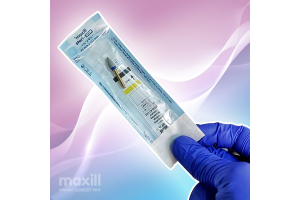What Is an Impression Tray?
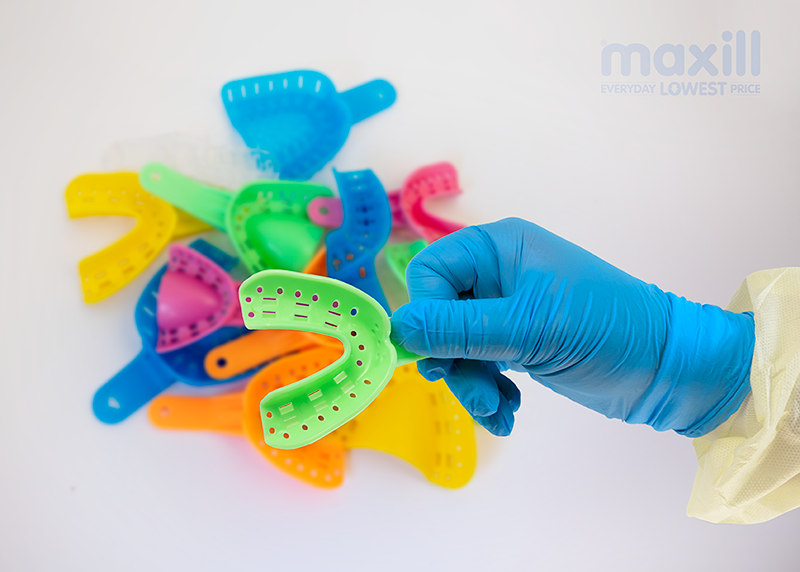
Impression trays are an important part of dentistry.
These specialized tools are used to create a precise impression or mold of a patient’s teeth and surrounding oral structures, that is then used to create an accurate 3-dimentional model of the patient’s mouth. The models made from the impression can then be used for different dental appliances or treatments, such as orthodontics, prosthodontics, mouth guards, snoring appliances, dentures, whitening trays, crowns, bridges, and more.
During a dental visit, if an impression is required, the impression tray is filled evenly with the impression material of choice, alginate is one of the most common materials used for impressions in dentistry. The filled tray is then seated over the arch of the teeth capturing a negative imprint of the teeth, gums.
The material sets quickly once it is inside the mouth, allowing for accurate details to be captured.
Types of Impression Trays
There are several different types of impression trays available, depending on the type of dental work being performed and the materials that will be used.
Stock Trays
The most widely used type is the stock tray which comes pre-made with fixed sizes.
Although this type of tray comes in set sizes, it can easily be customized by adding wax as a bumper or void filler, to fit a patient's mouth.
However, this type may not be suitable for patients with severely crowded teeth as its pre-formed design does not allow much flexibility. An impression tray should cover all anatomical landmarks leaving about 4-5mm of space around all areas for the impression material.
Stock impression tray materials include stainless steel, plastic, or acrylic resin, and can be solid or perforated with holes for more material retention.
Disposable Plastic Trays
Some dentists may choose to use disposable plastic trays to minimize cross-contamination between patients, allowing offices or labs to dispose of the tray after use to ensure patient safety. They also eliminate the time staff members take to clean, disinfect, package, and sterilize each tray. This can be a great cost-effective way to take impressions in a dental office.
Custom Trays
Custom trays are impression trays that are specially made and tailored to fit an individual's mouth. Custom trays are recommended when a stock tray cannot be altered to allow for adequate space for the material. (dentists and assistants can also make them, and require an impression to be made…)
There are plenty of materials and techniques used to fabricate a custom tray, including thermoplastic resin, heat-activated acrylic resins, and light-cured resins.
Are Certain Trays for Certain Procedures?
There are many different types of impression trays, many of which can be used interchangeably for an array of dental procedures or treatments. When deciding which type of impression tray you need for your procedure, first you must know what needs to be captured in the impression, then choose the tray which best fits the purpose.
Full Arch Impression Tray
A Full Arch Impression Tray is typically used to capture an entire arch which aid in fabrication of diagnostic models, dentures, whitening trays, night guards, orthodontic appliances, sports guards, implant crowns, veneers, or larger crown and bridge cases.
Full arch trays appear different based on whether they are for the upper or lower dentition. The upper arch is full to allow a palatal impression for appliance such as dentures and retainers that require use of the palate. Whereas the lower full arch tray looks more like a horseshoe, allowing space for the tongue while still capturing the structures of the lower dentition with ease.
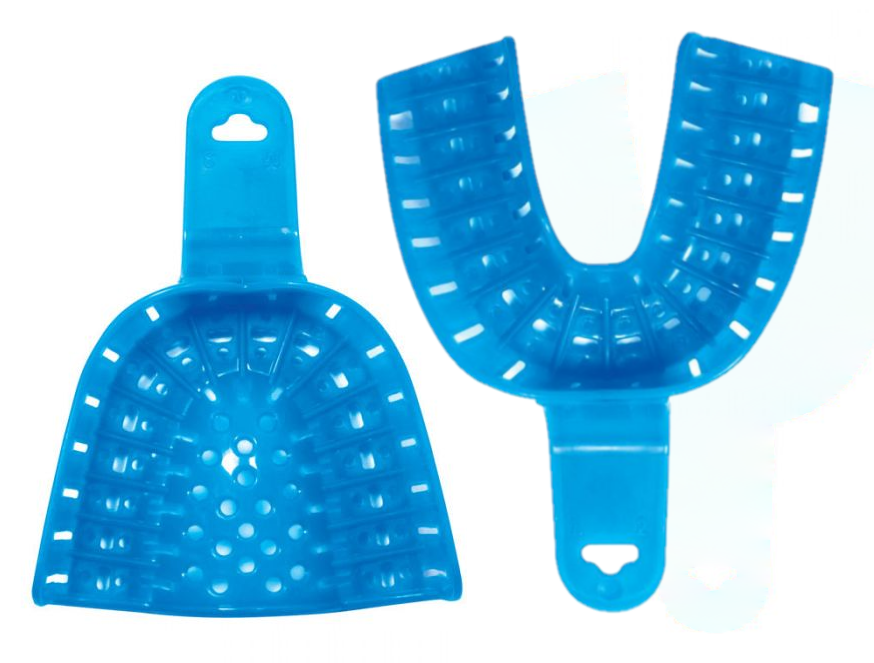
Anodontia Impression Tray
Anodontia Impression Trays, unlike the previous trays, are shallower and smoother as they are designed for arches with no teeth. The smooth curves and splayed edges are designed to capture a detailed impression of the soft tissues and ridge, requiring less material than other trays. These are frequently used during the preliminary steps when fabricating full arch dentures or creating a custom surgical stent for placing implants.
Universal Sectional Impression Trays
While the previously mentioned impression trays cover the entire arch, a universal sectional impression trays only covers a portion of the arch, such as a quadrant or sextant.
There are three different universal section trays. Quadrant trays cover half of the arch, what makes them universal is the quad tray that fits the upper right, is also designed to fit the lower left. Meaning the upper left tray, is also used for the lower right.
The third universal sectional tray is the anterior sextant tray. This tray covers the front portion of the arch. It is shorter than a full arch tray, and does not have a palatal aspect, allowing you to use it for both upper and lower.
These trays are great for taking template impressions, for the fabrication of temporary crowns, bridges, or veneers.
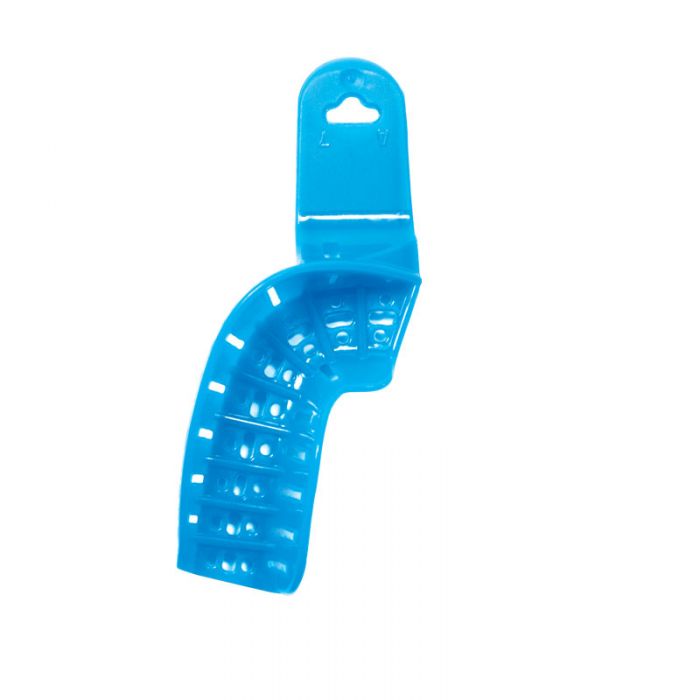
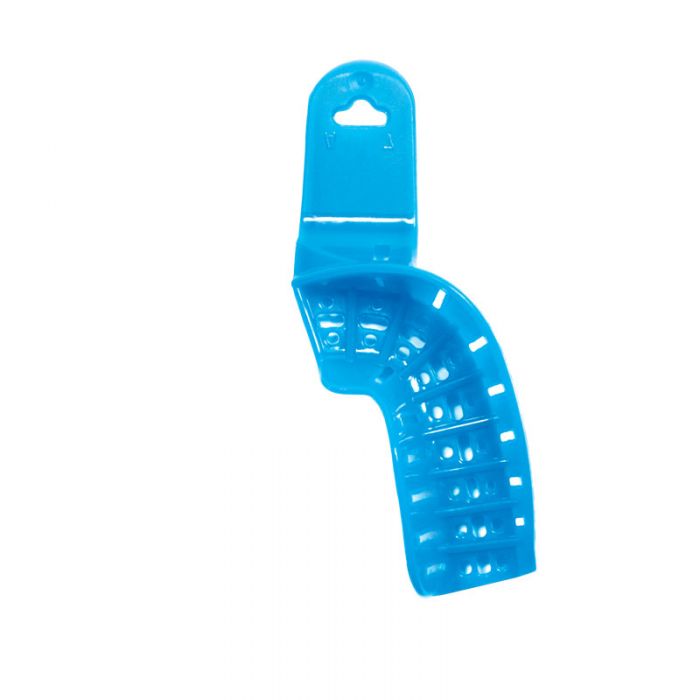
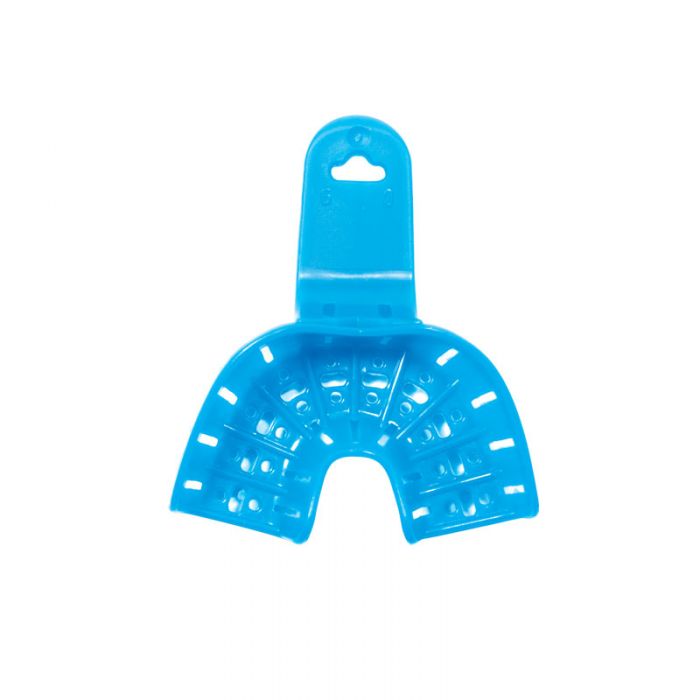
Dual-Arch Tray /Triple Tray
These four specially designed trays are specifically designed for double arch impressions, capturing both upper and lower arches, while simultaneous capturing the occlusal relationship of the opposing dentition.
These trays can be made from metal or plastic, with a mesh separating the opposing dentition. Metal dual arch trays appear to provide accuracy, greater than a plastic tray, making them ideal when taking final impressions for crowns, bridges, and veneers.
Plastic triple trays are flexible in comparison to the metal, allowing them to distort easier. These are great for preliminary fabrication of crowns, bridges, or veneers.
Orthodontic Trays
Orthodontic trays are specifically designed with higher walls and extra clearance that is required to fit over orthodontic brackets and wires. The unique retention design locks in alginate without the use of dental adhesives, to ensure a strong hold when removing the impression from a patient with brackets.
They are usually disposable and can also be used for non-ortho patients.
What should you look for in an Impression Tray?
To ensure that impressions turn out every time, there are certain features to look for when choosing an impression tray.
- The size of the tray is important; it should fit comfortably in the patient’s mouth without causing any discomfort or pinching of the oral tissues, leaving about 4-5mm of space between the arch and the tray for your material.
- An impression tray must also be made with materials that are safe to use within a medical environment.
- The impression tray should have some means of retention, whether it is perforated, has a mesh lining, or has a rim to hold the material and reduce risk of the material separating from the tray when removing it from the mouth.
- It should have enough strength to withstand pressure from the suction created when removing the impression after it has fully set, without breaking or bending.
Conclusion
Dental impression trays come in various shapes, sizes and materials and provide the flexibility to be used for many different procedures and applications.
maxill is a great option for getting reliable dental supplies like the disposable impression trays disucussed in thie article. A quality dental tray designed for the right application can aid in the success of your dental treatment planning and treatment completion.



